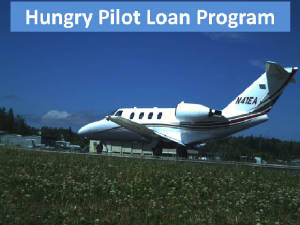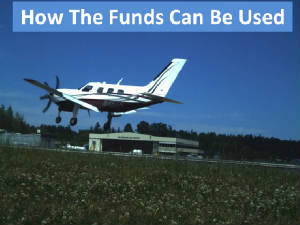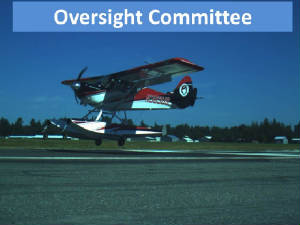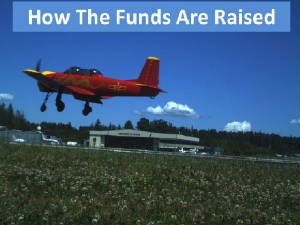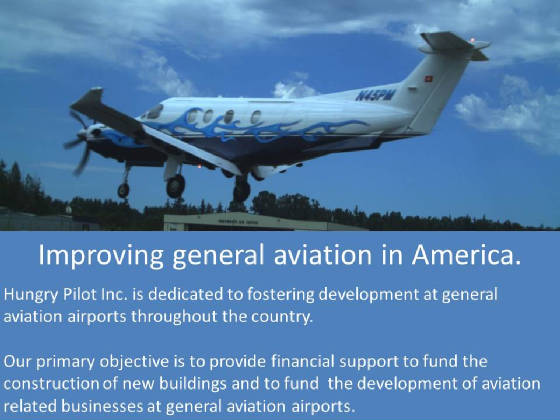Runway Safety
Reducing the risk of runway incursions is one of the FAA’s top priorities. The number of serious runway incursions — called Category A and B — dropped by more than 63 percent from fiscal year 2000 through fiscal year 2008. In the first quarter of fiscal year 2009, there were no serious runway incursions. That is an all-time low for a three month period. All categories of runway incursions were down slightly for the first quarter of fiscal year 2009 versus the same period in fiscal year 2008 — 224 in 2009 compared to 226 in 2008.
Given that there were nearly 30 million flights in the U.S. last year, a passenger would have to board more than three million flights before having the probability of being involved in a serious runway incursion. Put another way, a passenger would have to board a flight every day in the U.S. for more than nine thousand years before having the same probability.
| Total A and B Incursions | # Involving Commercial Aircraft | Fiscal Year |
|---|---|---|
| 67 | 34 | 2000 |
| 53 | 26 | 2001 |
| 37 | 11 | 2002 |
| 32 | 10 | 2003 |
| 28 | 9 | 2004 |
| 29 | 9 | 2005 |
| 31 | 10 | 2006 |
| 24 | 8 | 2007 |
| 25 | 9 | 2008 |
| 0 | 0 | 1st quarter 2009 |
What is a Runway Incursion?
A runway incursion is any unauthorized intrusion onto a runway, regardless of whether or not an aircraft presents a potential conflict. This is the international standard, adopted by the International Civil Aviation Organization.
It is important to note that the FAA formerly tracked incidents that did not involve potential aircraft conflicts as surface incidents. These incidents were not classified as “runway incursions” and were tracked and monitored separately. Most of these events are now considered Category C or D incursions, which are low-risk incidents with either no conflict potential or ample time or distance to avoid a collision. This means that the total number of runway incursion reports increased primarily because surface incidents are now classified as runway incursions.
There are four categories of runway incursions:
- Category A is a serious incident in which a collision was narrowly avoided
- Category B is an incident in which separation decreases and there is a significant potential for collision, which may result in a time critical corrective/evasive response to avoid a collision.
- Category C is an incident characterized by ample time and/or distance to avoid a collision.
- Category D is an incident that meets the definition of runway incursion such as incorrect presence of a single vehicle/person/aircraft on the protected area of a surface designated for the landing and take-off of aircraft but with no immediate safety consequences.
Background
More than 600,000 pilots made more than 58 million takeoffs and landings last year at airports with air traffic control towers. These operations were handled by about 15,000 air traffic controllers at more than 500 towered airports. Adding to this complex choreography are the hundreds of thousands of individuals who drive vehicles on airport grounds.
The sheer number of flights, people, and vehicles moving across airport runways and taxiways means there is no single way to reduce runway incursions. Runway safety is a shared responsibility among pilots, controllers, and vehicle drivers. Automated warning systems enhance runway safety, but education and situational awareness are the keys to preventing incursions.
FAA’s Runway Safety Management Strategy
To address the errors committed by pilots, air traffic controllers and airport-authorized vehicle operators and pedestrians, the FAA is focusing on outreach, awareness, improved infrastructure and technology.
Outreach to Pilots
The majority of runway incursions are caused by pilots in violation of regulations and air traffic control instructions – also known as pilot deviations. The FAA completed an analysis of taxi clearances and found that more explicit instructions are needed from controllers to pilots. The FAA has issued new requirements for controllers to give explicit directions to pilots on precise routes to travel from the gate to the runway. The FAA has also issued new requirements for aircraft to have crossed all intervening runways prior to receiving a takeoff clearance. Future requirements will cover runway crossing clearances, take off and landing clearances and the adaptation of international surface phraseology.
Other outreach efforts:
- The FAA published a booklet for pilots, which highlights communication procedures for safe surface operations at towered and non-towered airports.
- The agency created two online courses that educate pilots on runway safety. One is tailored for commercial aviation pilots and the other for general aviation pilots.
- Every year, the FAA conducts hundreds of safety seminars across the country to encourage safe practices on the airfield.
- The role of Flight Service Station (FSS) specialists was expanded to provide runway safety information to pilots using towered and non-towered airports.
- FAA Aviation Safety Inspectors now verify that pilots have current surface movement charts (airport diagrams) available and that they are in use.
Situational Awareness
- The FAA-produced DVDs to highlight safe surface operations and proper communications procedures for both general aviation and commercial pilots.
- To enhance air traffic supervisor and controller discussions of serious runway incursions during team briefings, the FAA is developing simulated re-creations of actual incursions.
- Airport managers and fixed-base operators participate in Runway Safety Action Teams to address airport-specific factors (e.g., procedures, environment and infrastructure) that affect runway safety. The FAA requires driver training programs for all airport operators who access the airfield movement areas at commercial airports.
- The agency developed and initiated controller training to enhance their skills in teamwork, communication, problem solving, situational awareness and managing workloads.
Technology
- Airport Movement Area Safety System (AMASS). AMASS is a radar-based system that tracks ground movements and provides an automatic visual and audio alert to controllers when it detects potential collisions on airport runways and taxiways. The FAA has installed AMASS at the nation’s top 34 airports.
- Airport Surface Detection Equipment, Model X (ASDE-X) is an even more sophisticated surface detection technology. While AMASS is radar-based, meaning signals might bounce off rain and fog, ASDE-X integrates data from a variety of sources, including radars and aircraft transponders, to give controllers a more reliable view of airport operations. Controllers in the tower see the aircraft on a continuously updated color display map and are able to spot potential collisions. ASDE-X capabilities will be added to many of the sites that already have AMASS, as well as other busy airports. For more information, see the ASDE-X fact sheet dated April 7, 2008.
- Runway Status Lights The FAA is also testing new technologies that will alert pilots to potential runway incursions. Runway Status Lights are just as they sound: a series of runway lights, not unlike traffic lights, that tell pilots whether or not runways are clear. Surface and terminal surveillance systems, such as ASDE-X and AMASS, detect the presence and motion of aircraft and vehicles on or near the runways. The Runway Status Light safety logic then assesses any possible conflicts with other surface traffic. Red entrance lights embedded in the pavement are illuminated if the runway is unsafe for entry or crossing, and red takeoff hold lights are illuminated if the runway is unsafe for departure. All of the following airports will have Runway Status Lights by 2011:Atlanta; Boston; Charlotte; Chicago (O’Hare); Dallas-Ft. Worth; Denver; Detroit; Ft. Lauderdale; Houston (George Bush); Las Vegas; Los Angeles; Minneapolis; New York (JFK, LaGuardia and Newark); Orlando; Philadelphia; Phoenix; San Diego; Seattle; and Washington (BWI and Dulles).
- Another new technology is an experimental system called the Final Approach Runway Occupancy Signal (FAROS). FAROS is designed to prevent accidents on airport runways by activating a flashing light visible to pilots when landing aircraft to warn them that the runway is occupied and hazardous. The system is being tested at both Dallas-Ft. Worth and Long Beach/Daugherty Field Airport in California.
- Moving Map Displays and Aural Alerts.The FAA reached agreements with four U.S. airlines to fund in-cockpit runway safety systems in exchange for critical operational data. The data will help the FAA evaluate the safety impact of the technology and is expected to accelerate key safety capabilities necessary for the transition to NextGen. The FAA will provide $600,000 each to SkyWest, Piedmont, US Airways and Southwest Airlines to invest in surface moving maps with own-ship position on an Electronic Flight Bag for flights to or from 21 test bed airports. The safety technology provides greater situational awareness for pilots to help them avoid unsafe operations on the airport surface. The technology will be installed in 20 aircraft at each airline by Spring 2009. The FAA expects initial results from the data analysis by September 2009. Each agreement will remain in effect through September 2011.
- Low Cost Surveillance Systems. The agency is considering the use of low-cost, commercially available radar surveillance systems at certain small and medium-sized airports. A low-cost system would further reduce the risk of ground incidents or accidents, especially during periods of low visibility. It would be installed at airports that do not have either ASDE-3 or ASDE-X. The first contract to install and test a low-cost ground surveillance system was awarded in January 2009 to Thales ATM. Thales will deliver, install and test a ground surveillance system at airports chosen by the FAA. The agency will select multiple companies for these tests in order to evaluate the different alternatives. Testing is expected to last from several months to a year (many variables, especially weather, can affect the testing).
Other Initiatives
The FAA’s Call to Action
FAA and industry leaders have identified short-term steps to improve runway safety. These initiatives focused on improved procedures, increased training for airport and airline personnel, and enhanced airport signs and markings. Another short-term initiative is an agreement with the National Air Traffic Controllers Association (NATCA) for a voluntary reporting system. Mid- and long-term goals are being pursued to address maximizing situational awareness, minimizing pilot distraction, and eliminating runway incursions using procedures and technologies. For a detailed status report, see Call to Action fact sheet.
The Runway Safety Council
Formed in October 2008, the Runway Safety Council is a joint effort between the FAA and the aviation industry to look into the root causes of runway incursions. The Council is comprised of representatives from various parts of the aviation industry. A working group integrates investigations of severe runway incursions and conducts a root cause analysis. The working group then presents its root cause analysis to the council and makes recommendations on ways to improve runway safety. The council reviews the recommendations. If accepted, they are assigned to the part of the FAA and/or the industry that is best able to control the root cause and prevent further runway incursions. The council tracks recommendations to make sure appropriate action is taken.
Improved Management Oversight
The FAA established regional runway safety program manager positions for each region. Additionally, Runway Incursion Action Teams were established for specific airports. The action teams hold meetings at hundreds of airports around the country.
Airfield Changes
- The FAA developed standards for end-round taxiways, which can keep aircraft from having to cross runways being used for takeoffs and landings at the busiest airports. New end-round taxiways at Atlanta and Dallas-Fort Worth will eliminate more than 2,000 runway crossings each day.
- The FAA encourages operators to build perimeter roads around the airfield so that vehicles do not have to be driven across taxiways and runways.
Airport Signs, Marking and Lighting
The FAA updates standards for runway marking and signs, eliminating confusion on airfields. Some of those updates include:
- Changing the airfield markings (paint) standard for taxiway centerlines at 75 airports (based on enplanements) to require new markings that will alert pilots when they are approaching hold short lines.
- Working with airport operators to install stop bars at certain runway/taxiway intersections. A stop bar is a series of in-pavement and elevated red lights that indicate to pilots that they may not cross.
- Recommending that airports improve how they provide information on rapidly changing runway and taxiway construction and closings. The FAA wants airports to provide airlines and pilots with diagrams giving the latest information on runway construction and closings. This would be distributed by email, on a web site or hand-delivery. It would supplement Notices to Airmen (NOTAMS), which are printed as text or delivered verbally, and thus do not have diagrams.
Runway Safety Areas
- Since the late 1980’s the FAA has had in effect standards for runway safety areas that exceed ICAO standards.
- The FAA accelerated the improvement of runway safety areas that do not meet agency design standards. Since 2000, 72 percent of the runway safety areas identified as “high priority” have been improved as of December 2008. The FAA expects to make all practicable improvements made by 2015.
- The FAA, in partnership with industry and airport operators, conducted research to develop a soft-ground arrestor system to quickly stop aircraft that overrun the end of a runway. On the basis of that research, the FAA issued a specification for engineered material arresting systems, or EMAS. An EMAS bed provides a safety enhancement on runway ends where there is not enough level, cleared land for a standard runway safety area. EMAS has been installed at more than 41 runway ends at 28 airports with plans to install 15 additional EMAS systems at 9 additional airports in the United States.
